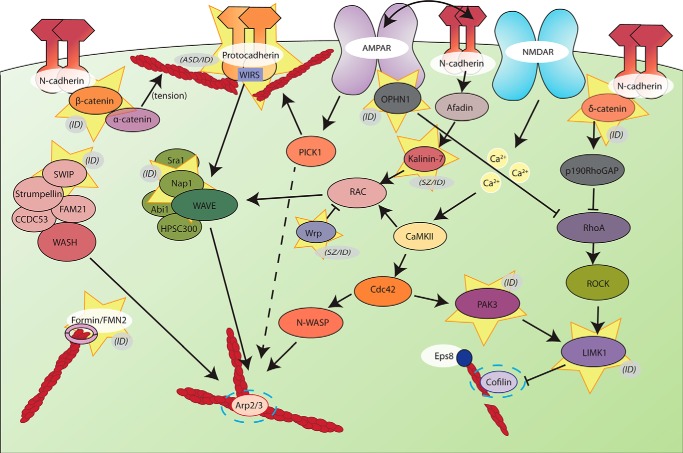FIGURE 3.
Actin signaling pathways and their association with brain disorders. Shown is a schematic of proteins involved in regulating the spine actin cytoskeleton. The synaptic actin cytoskeleton is a common pathway in which mutations are associated with increased risk for brain disorders. Each protein highlighted by yellow stars has a genetic mutation associated with ID, SZ, or ASD, each of which are indicated in parentheses. Finally, the dashed lines surrounding the Arp2/3 complex and cofilin indicate the final points of signaling output for actin remodeling, both of which have been studied extensively through knock-out mouse studies. Loss of Arp2/3 complex activity in the mouse forebrain mimics aspects of psychiatric conditions such as schizophrenia-related disorders, whereas loss of cofilin is associated with decreased anxiety in mice. ROCK, Rho-associated kinase.

